Where is Uganda?
About Uganda
The Land
The People
Life and Death
Health, Energy and the Environment
Education and Work
Travel, Communication and the Media






Back to the Flags of Africa page




Uganda is an above-average size country in central Africa.
Uganda is landlocked but borders Lake Victoria.
The land is mostly plateau with mountains on the rim of the country.
The geographical coordinates for the centre of Uganda, also known as lines of latitude and longitude, are:-
Latitude - 1 00N
Longitude - 32 00E
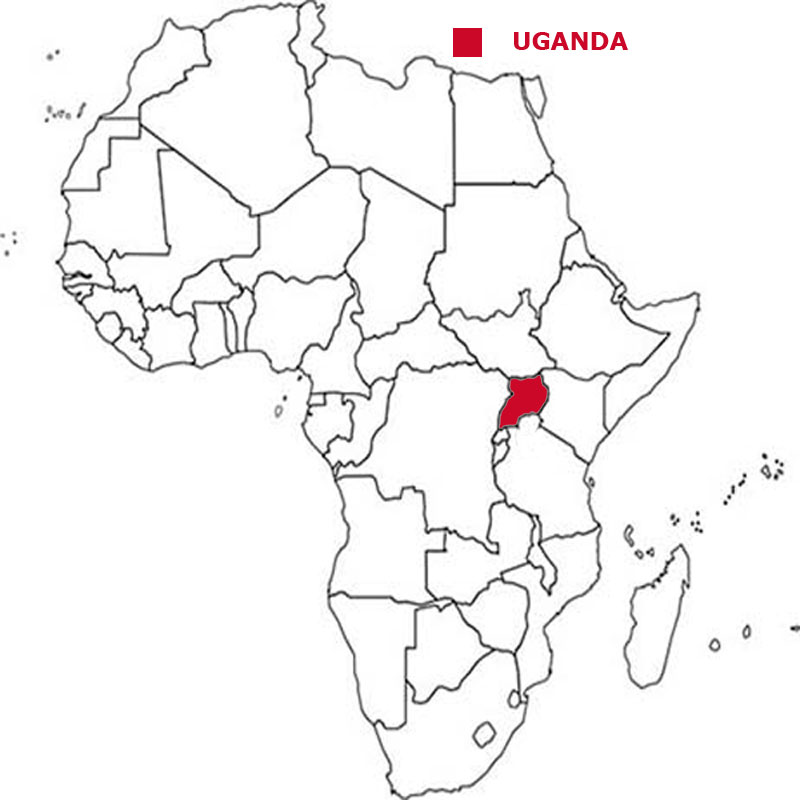

Check the weather in Kampala now.
This is the time in Kampala now
 The Ugandan flag is six equal horizontal stripes of bands of black, at the top, then yellow, red, black, yellow, and red. A white disc is in the centre and inside the disc is
a grey crowned crane, which is the national symbol. The crane faces the flagpole. Black represents the African people, yellow sunshine and vitality and red
African brotherhood.
The Ugandan flag is six equal horizontal stripes of bands of black, at the top, then yellow, red, black, yellow, and red. A white disc is in the centre and inside the disc is
a grey crowned crane, which is the national symbol. The crane faces the flagpole. Black represents the African people, yellow sunshine and vitality and red
African brotherhood.
Uganda is a presidential republic with a president as head of state and head of the government.
In elections everyone over the age of 18 can vote.
The currency in Uganda is the Ugandan shilling. Uganda is a member of the Commonwealth.
English is the official language.
Hear the National Anthem
These are the anthem words
We have already written our own history of England but are asking schools in Uganda to provide us with a detailed history of
their own country. Check how here.
![]()
![]() Back to the top
Back to the top

The total land area of Uganda is 197,100 sq kms which is the 34th largest in Africa.
Uganda has lakes, rivers and canals which total 43,938 sq kms.
Uganda has boundaries with 5 countries
- Democratic Republic of Congo 877 kms
- Kenya 814 kms
- South Sudan 475 kms
- Tanzania 391 kms
- Rwanda 172 kms
Uganda has no coastline.
The highest point in Uganda is Margherita Peak on Mount Stanley at 5,110 metres.
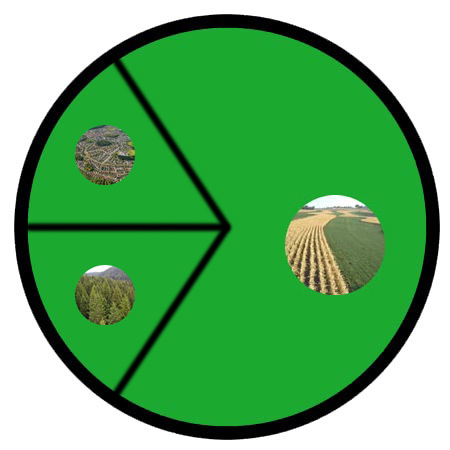

The total population of Uganda is 40.85 million people, making it the 9th largest country in Africa by population.
Of this number 20.56 million are females and 20.29 million are males.
A person from Uganda is called a Ugandan.
To be a citizen of Uganda, one of your parents or grandparents must be a citizen of Uganda. It is not sufficient to be born in Uganda. You have to live in Uganda for
a total of 20 years and continuously for the last 2 years prior to applying for citizenship
The largest five cities in Uganda, by population are:-
- Kampala 1,353,189 people
- Gulu 146,858
- Lira 119,323
- Mbarara 97,500
- Jinja 93,061
 Each little Owlbut is 1 person and
the big yellow rectangle is 1 sq km. After a while you can compare countries and see which ones are the most crowded. Remember it is only an average as
more people live closer together in towns and cities than in villages out in the country.
Each little Owlbut is 1 person and
the big yellow rectangle is 1 sq km. After a while you can compare countries and see which ones are the most crowded. Remember it is only an average as
more people live closer together in towns and cities than in villages out in the country.

23.8% of the people live in cities or towns.

The birth rate in Uganda is 42.4 births per 1,000 of population
The death rate in Uganda is 9.9 deaths per 1,000 people.
Check this against the birth rate. If the death rate is higher than the birth rate then
the population will decrease unless immigrants arrive in the country.
There are 45.7 deaths of girls under 1 year per 1,000 of births and 63.3 deaths of boys.
The median age for females is 16.0 and for males is 15.8. The median age is that age which divides the population exactly in half so there are the same number
of people above the median age as below it.
The average age of a woman when she has her first child is 18.9.
The elderly dependency ratio is 4.4. This is the number of elderly people (ages 65+) per 100 people of working age (ages 15-64).
The potential support ratio is 22.8. This is the number of working-age people (ages 15-64) per one elderly person (ages 65+). As a population ages, the potential support ratio tends to fall, meaning there are fewer potential workers to support the elderly.
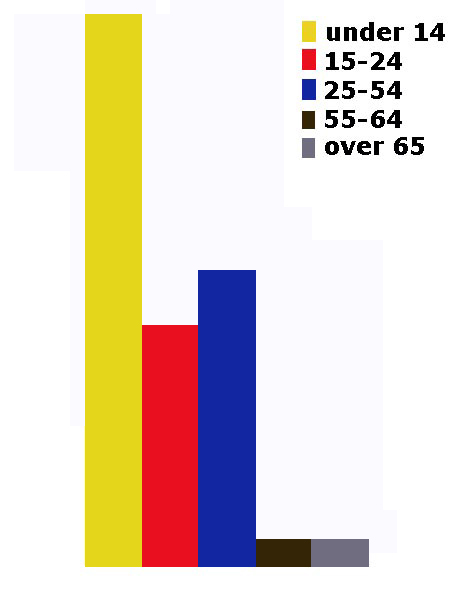
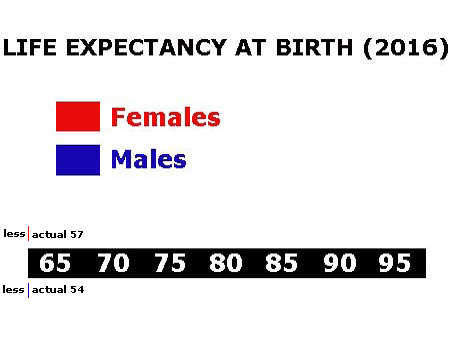

Uganda spends 7.2% of its total income on health care.
There are 0.09 doctors per 1,000 people.
There are 0.5 hospital beds per 1,000 people.
5.3% of the population are estimated as obese.
95.5% of the urban population and 75.8% of the rural population have drinking water that is either piped into their home or they have access to a public tap, a protected borehole, well, spring or
protected rainwater collection facility.
28.5% of the urban population and 17.3% of the rural population have access to a flushing toilet that is connected to a sewer, a pit latrine (that is a
permanent hole in the ground that is looked after) or a composting toilet.
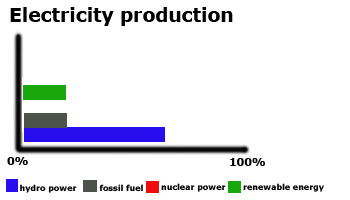
Uganda releases 2.7 million metric tons of carbon dioxide by burning fossil fuels in the process of producing and consuming energy. This puts it as the 28th highest in Africa.

Uganda spends 2.8% of its total income on education.
Children usually start school at age 6 in Uganda. Primary education is for seven years until age 13 and secondary education can continue till 19. This may be followed
by further education at a university or college.
Generally the school year consists of 3 terms and starts in the first week of February and finishes at the end of November. There is usually a 3 week
break during May and another starting in the last week in August.
71.5% of females and 85.3% of males are able to read and write by the age of 15.
14.8% of all people aged between 16 and 24 are not in work. Among females 17.3% are unemployed while with males 12.7% can't find work.
The total number of people available for work in Uganda is 15.84 million.
 They work in the following sectors.
They work in the following sectors.
- Agriculture includes farming, fishing and forestry work
- Industry includes mining, manufacturing, construction and energy workers
- Services is everything else

There are 5 paved airports in Uganda, which is the 35th highest number in Africa.
![]()
There are 1,244 kilometres of railways in Uganda, the 15th longest in Africa.
![]()
There are 20,000 kilometres of roads in Uganda, which means Uganda is in 25th place for the most kilometres of roads in Africa.
![]()
There are 2 major national newspapers in Uganda.
There are 24.95 million mobile phone users.
1% of the people have a fixed landline.

18.15 million people have access to the internet at home via any device (computer or mobile).


